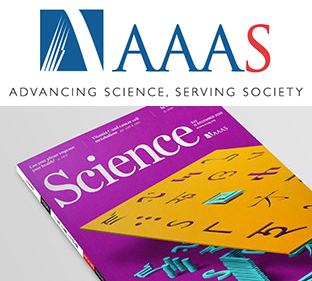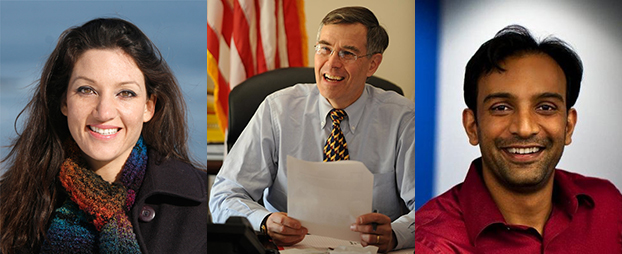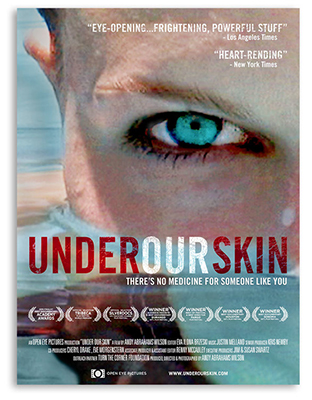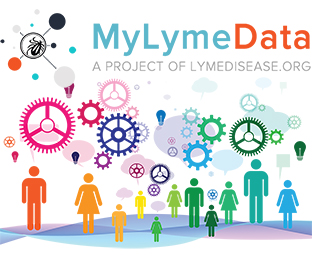Reflections from a Promising Dialogue at the AAAS Conference in Washington, DC, November 17-18
by Lia Gaertner, BAL Science Committee
 Some weeks ago, two members of the Bay Area Lyme Foundation Science Committee, Wendy Adams and Lia Gaertner, attended a leadership symposium in Washington, DC, sponsored by the American Association for the Advancement of Science (AAAS) and entitled, “Innovations-X: Rising Above the Politics for Progress in Science.” The AAAS is the world’s largest general scientific society, with more than 125,000 individual and institutional members, and the publisher of Science magazine. Its mission is “to advance science, engineering, and innovation throughout the world for the benefit of all people.” At this event, there were three “wicked problems” discussed over two days: climate change, global/mobile health, and Lyme disease. This blog, written by Lia Gaertner, will focus only on the Lyme portion of the conference.
Some weeks ago, two members of the Bay Area Lyme Foundation Science Committee, Wendy Adams and Lia Gaertner, attended a leadership symposium in Washington, DC, sponsored by the American Association for the Advancement of Science (AAAS) and entitled, “Innovations-X: Rising Above the Politics for Progress in Science.” The AAAS is the world’s largest general scientific society, with more than 125,000 individual and institutional members, and the publisher of Science magazine. Its mission is “to advance science, engineering, and innovation throughout the world for the benefit of all people.” At this event, there were three “wicked problems” discussed over two days: climate change, global/mobile health, and Lyme disease. This blog, written by Lia Gaertner, will focus only on the Lyme portion of the conference.
The conference was organized by Dr. Kristen Honey, a Stanford scientist and Policy Advisor in the Office of Science and Technology Policy of the White House. The list of conference speakers included the CEO of AAAS and former U.S. Congressman, the Honorable Rush Holt, Jr., PhD, as well as the U.S. Chief Data Scientist and Deputy Chief Technology Officer at the White House, DJ Patil. This conference was unique in that the AAAS and government officials shared the stage with Lyme researchers, physicians, and patient advocates from all over the the USA.

 The conference opened with a Bay Area Lyme Foundation-sponsored dinner and screening of “Under Our Skin,” the Lyme documentary by filmmaker Andy Abrahams-Wilson, followed by a panel discussion with Wendy Adams, Andy Abrahams-Wilson and an AAAS Fellow, Mia Lowden, PhD, that focused on how to use art (e.g., a film) to impact the field of science.
The conference opened with a Bay Area Lyme Foundation-sponsored dinner and screening of “Under Our Skin,” the Lyme documentary by filmmaker Andy Abrahams-Wilson, followed by a panel discussion with Wendy Adams, Andy Abrahams-Wilson and an AAAS Fellow, Mia Lowden, PhD, that focused on how to use art (e.g., a film) to impact the field of science.
Conference architect Dr. Honey set the tone for the conference by presenting the ecological concept of “excaptation,” which is a term used in evolutionary biology to describe a trait that has been co-opted for a use other than the one for which natural selection has built it. The analogy for Lyme is a scenario where perhaps the best diagnostic or therapeutic already exists but has only been used to date for another disease, such as cancer. Or, it could be that perhaps a diagnostic or therapeutic that researchers create for Lyme will eventually help other underserved diseases such as chronic fatigue, multiple sclerosis (MS), etc. Several researchers spoke about new information that continues to emerge in the areas of genomics (genes), proteomics (proteins), and metabolomics (metabolites) and how this research should be useful in efforts to improve diagnostics and therapeutics for Lyme disease.
As we know, Lyme disease is the USA’s most common vector-borne disease and the third highest reported infectious disease (after chlamydia and gonorrhea). There is a consortium of scientists and physicians at leading universities and hospitals who are beginning to work toward better diagnostics and treatment for Lyme disease and other tick-borne infections. Of the CDC estimated 300,000 new Lyme cases every year, some 30-60% continue to have persistent symptoms after their initial treatment. There is currently no FDA approved treatment for post treatment Lyme disease (PTLD).
Some researchers have recently found that people with PTLD have certain, identifiable elevated blood markers, but there are different theories about why some patients are still symptomatic after an initial antibiotic treatment… Is it an autoimmune response to remnant bacteria, do the Lyme bacteria survive treatment due to their protective biofilm, or do the bacteria hide in a cyst form in low-vasculature parts of the body such as connective tissue and joints where antibiotics cannot kill them all? Like tuberculosis (TB), it is possible that Lyme needs to be treated simultaneously with multiple antibiotics simultaneously in order to address the different forms of the bacteria and to break up their protective biofilms. Some researchers are screening large databases of more than 10,000 drugs to see what could work best against Lyme bacteria.
This AAAS conference focused on “‘precision data”’ especially for “invisible diseases” such as Lyme disease, fibromyalgia, mental illness, etc. The precision data initiative in the US government aims to use large-scale, national health data combined with specific genetic information to learn more about health on both a population and individual levels. “Big data on big populations means big answers”.
One of the main Lyme disease related themes discussed at this conference was how we can use large scale collections of Internet based health care data to improve the lives of those suffering from Lyme disease. We need a more accurate Lyme tracking program for the NIH, CDC, and research institutions to better understand the state of Lyme disease in this country and beyond.
 LymeDisease.org just launched a Lyme patient questionnaire (myLymedata) that could help elucidate the current Lyme situation from an “‘on the ground” perspective. The new Lyme patient survey is a donor-sponsored technique to provide previously unavailable large-scale Lyme data with regard to diagnosis and treatment. If more people become of aware of the need for better diagnostics and therapeutics, then more research dollars will be available to find solutions.
LymeDisease.org just launched a Lyme patient questionnaire (myLymedata) that could help elucidate the current Lyme situation from an “‘on the ground” perspective. The new Lyme patient survey is a donor-sponsored technique to provide previously unavailable large-scale Lyme data with regard to diagnosis and treatment. If more people become of aware of the need for better diagnostics and therapeutics, then more research dollars will be available to find solutions.
In most areas of science, private industry dollars outweigh government and university research dollars by 100:1, thus the need for more foundations and private donations to accelerate research which could provide better diagnostics and treatments for Lyme disease. (Incidentally, this is the mission and priority of the Bay Area Lyme Foundation. See here for more.) Crowd sourcing data and innovation may be another avenue towards expediting new solutions. The new Lyme patient survey is a donor-sponsored technique to provide previously unavailable large-scale Lyme data. Perhaps there is potential to crowd source a “‘hack”’ to find novel diagnostics and therapeutics?
On the last day of the AAAS conference, all the attendees were asked to break into groups and come up with one or two research questions that they think are the most crucial in the Lyme arena. There were dozens of interesting questions and it seemed that the most common ones were the same ones that we at the Bay Area Lyme Foundation prioritize: how can we create a reliable diagnostic for Lyme disease and what is an effective treatment for post-treatment Lyme disease (PTLD)?
All in all, we left optimistic and inspired that with the right minds, greater public awareness, and some financial commitment, there can be new solutions for this frustrating disease.